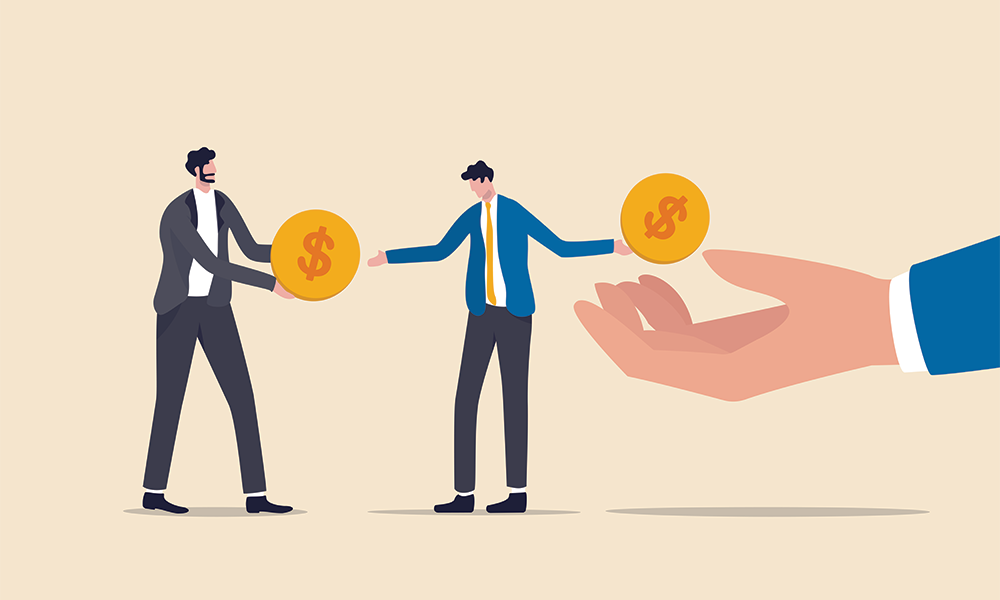What’s the Difference Between a Debtor and a Creditor?
Posted 4 years ago by Tracy

‘Debtors’ and ‘creditors’ are common terms when it comes to bookkeeping, but it’s important to be clear on the difference between the two and how both need to be accounted for in your financial records.
In simple terms, a creditor is an entity, company or individual that is owed money because they have provided a service or goods, or loaned money to you.
On the other hand, a debtor is an individual, business or other entity that owes money to you because they have been provided with a service or goods, or that is in debt to you.
This being the case, debtors will be shown as an assets in the balance sheet, while creditors are shown as liabilities.
So far, so straightforward, but let’s delve deeper into each.
What is a Creditor?
Businesses are likely to come across two different types of creditors: loans and trade creditors. The most common loans are from a bank or financial institution that has lent money to a business. Trade creditors, on the other hand, are suppliers of goods or services; for example you may have purchased goods and the payment is only due in 30 days time. Trade creditors are also known as accounts payable.
It's critical that your business keeps track of its creditors for a variety of reasons. Firstly, it’s essential to know how much your business owes, and when payments are due to be made. Effective creditor management will make sure that your business will have enough money in the bank to cover payments when they are due.
Creditors and Bankruptcy
If your company can no longer meet its debts, it may face bankruptcy, in which case assets will likely be sold to repay creditors. However, all creditors will not automatically recover all of their outstanding debts, and there is a set order in which creditors are paid.
In this scenario, there are three main creditor categories: secured, unsecured and preferential creditors.
Secured creditors – generally banks and asset-based lenders with security such as a mortgage or a piece of machinery – will be paid first, followed by preferential creditors, including employees who are owed wages.
Unsecured creditors, which includes suppliers, contractors, HMRC and customers, are last to be paid. Each category must be paid in full before the next can receive any money, so the outcome for unsecured creditors is not always positive.
What is a debtor?
Like creditors, debtors also generally fall into two categories – loans and trade debtors.
Most companies will not issue loans, unless that there is a core part of their business (for example a bank), in which case they will most likely be a regulated entity.
Trade debtors, meanwhile, are customers that owe money to your business. For example, when your company sells a product or delivers a service to a client on credit and sends them an invoice, the amount the customer owes becomes part of your trade debtors. These trade debtors are also known as accounts receivable.
How to manage debtors
Managing debtors efficiently is essential, and having proper processes in place will result in faster payments, fewer bad debts, and healthier cash flow. Ways to achieve this include being clear on payment terms and any credit limits, carrying out credit checks, managing overdue invoices following up late payments quickly.
Creditor and Debtor example
Depending on the nature of your business, you will likely find that your business has both debtors and creditors.
In fact, some transactions on their own will include debtor and creditor elements. For example, if you are VAT registered and you sell goods to a customer on credit, then the following journal entry would be recorded:
- Debit: Accounts Receivable (£120)
- Credit: Sales (£100)
- Credit: VAT Control Account (£20)
In the above example, we have increased our Accounts Receivable (i.e. debtors) by £120 as the customer still owes us money for those goods. In addition, we now owe HMRC £20 for VAT, and that amount will be reflected as a creditor on the balance sheet until such time as it is paid (typically on your next VAT return).
Further Reading
Tips for Tracking Business Expenses
Hospitality VAT rate set to rise to 12.5%: How to manage the change in AccountsPortal